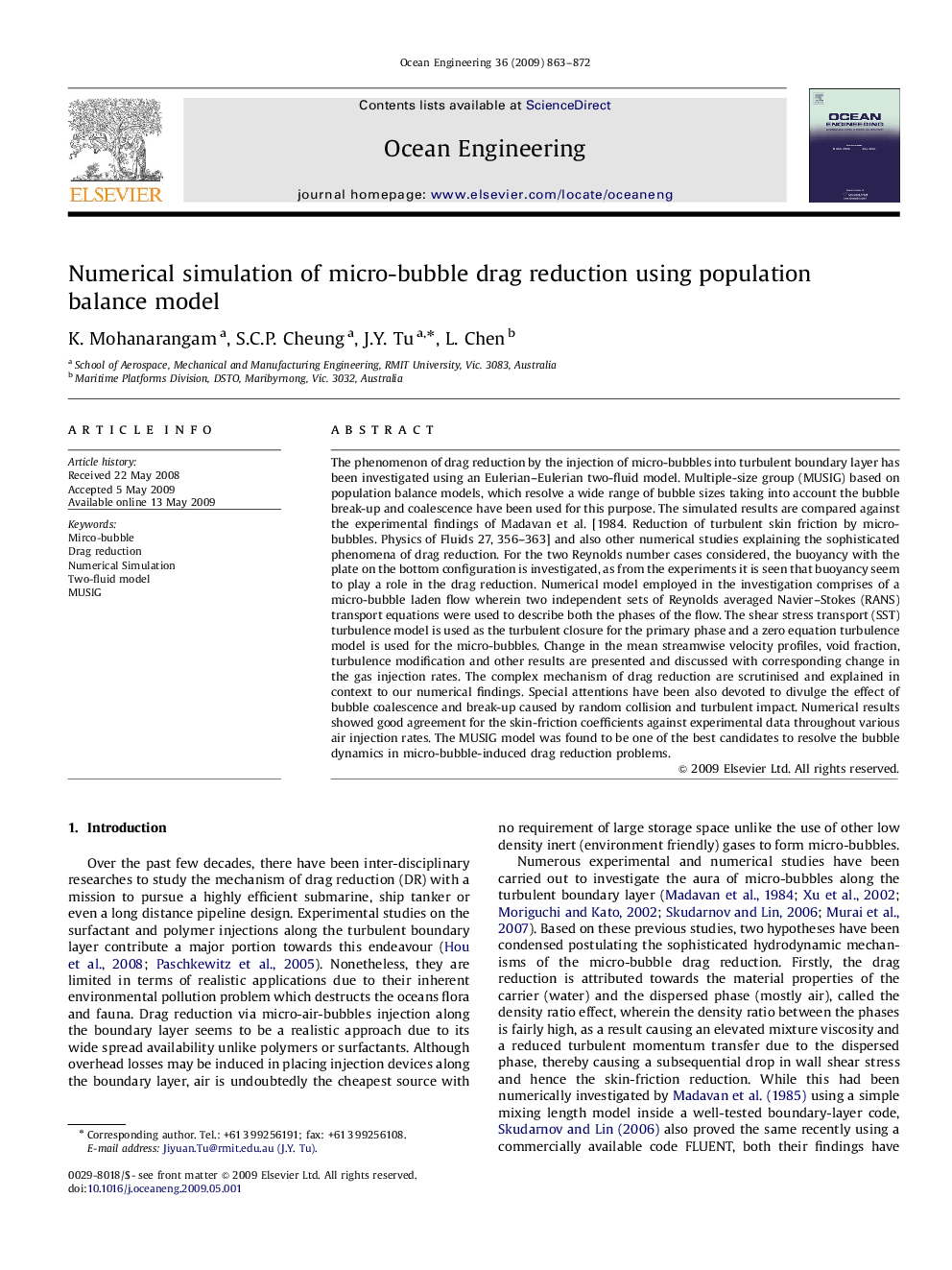| کد مقاله | کد نشریه | سال انتشار | مقاله انگلیسی | نسخه تمام متن |
|---|---|---|---|---|
| 1727251 | 1015161 | 2009 | 10 صفحه PDF | دانلود رایگان |

The phenomenon of drag reduction by the injection of micro-bubbles into turbulent boundary layer has been investigated using an Eulerian–Eulerian two-fluid model. Multiple-size group (MUSIG) based on population balance models, which resolve a wide range of bubble sizes taking into account the bubble break-up and coalescence have been used for this purpose. The simulated results are compared against the experimental findings of Madavan et al. [1984. Reduction of turbulent skin friction by micro-bubbles. Physics of Fluids 27, 356–363] and also other numerical studies explaining the sophisticated phenomena of drag reduction. For the two Reynolds number cases considered, the buoyancy with the plate on the bottom configuration is investigated, as from the experiments it is seen that buoyancy seem to play a role in the drag reduction. Numerical model employed in the investigation comprises of a micro-bubble laden flow wherein two independent sets of Reynolds averaged Navier–Stokes (RANS) transport equations were used to describe both the phases of the flow. The shear stress transport (SST) turbulence model is used as the turbulent closure for the primary phase and a zero equation turbulence model is used for the micro-bubbles. Change in the mean streamwise velocity profiles, void fraction, turbulence modification and other results are presented and discussed with corresponding change in the gas injection rates. The complex mechanism of drag reduction are scrutinised and explained in context to our numerical findings. Special attentions have been also devoted to divulge the effect of bubble coalescence and break-up caused by random collision and turbulent impact. Numerical results showed good agreement for the skin-friction coefficients against experimental data throughout various air injection rates. The MUSIG model was found to be one of the best candidates to resolve the bubble dynamics in micro-bubble-induced drag reduction problems.
Journal: Ocean Engineering - Volume 36, Issue 11, August 2009, Pages 863–872